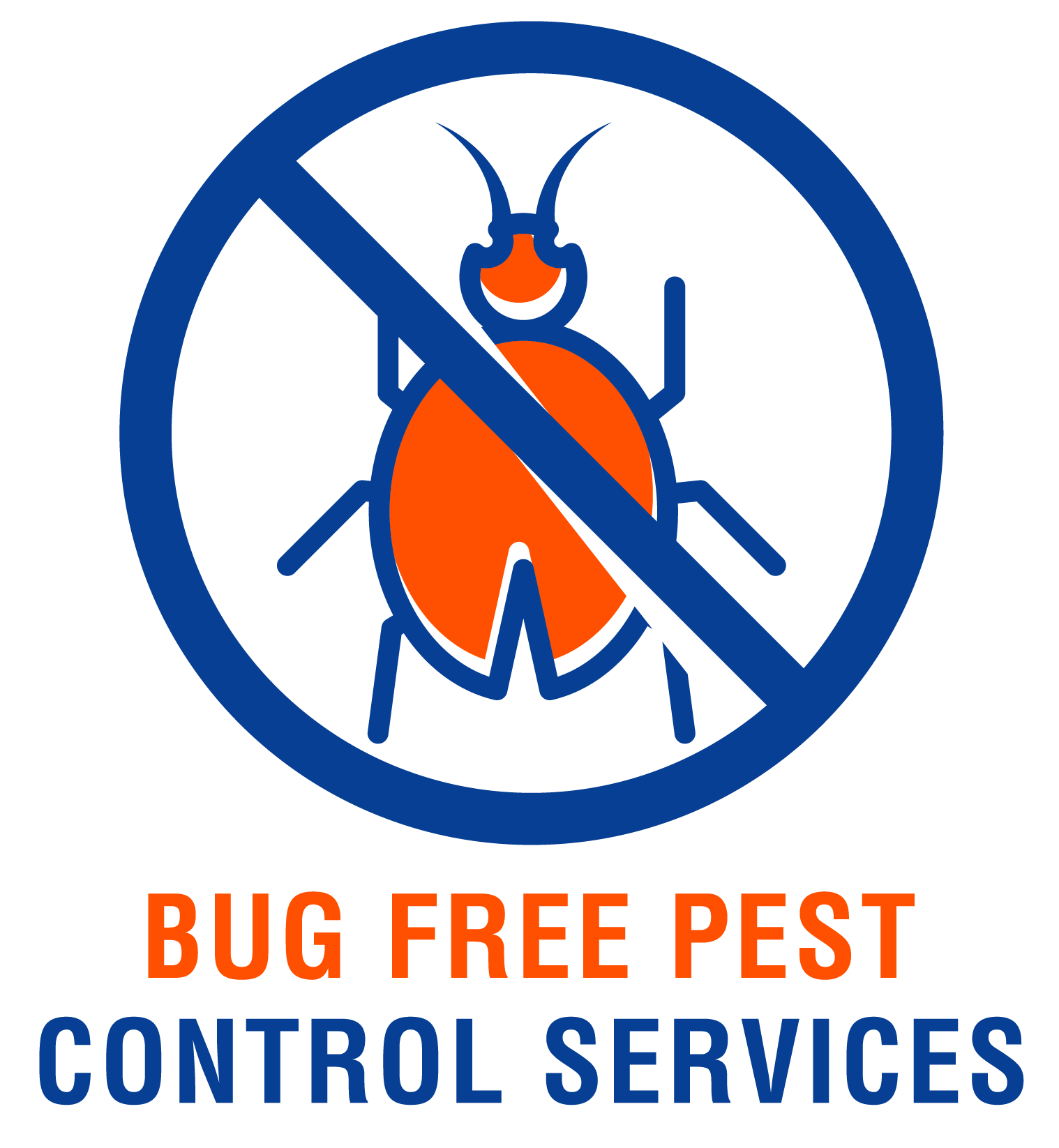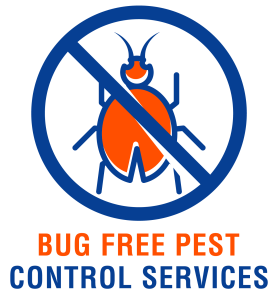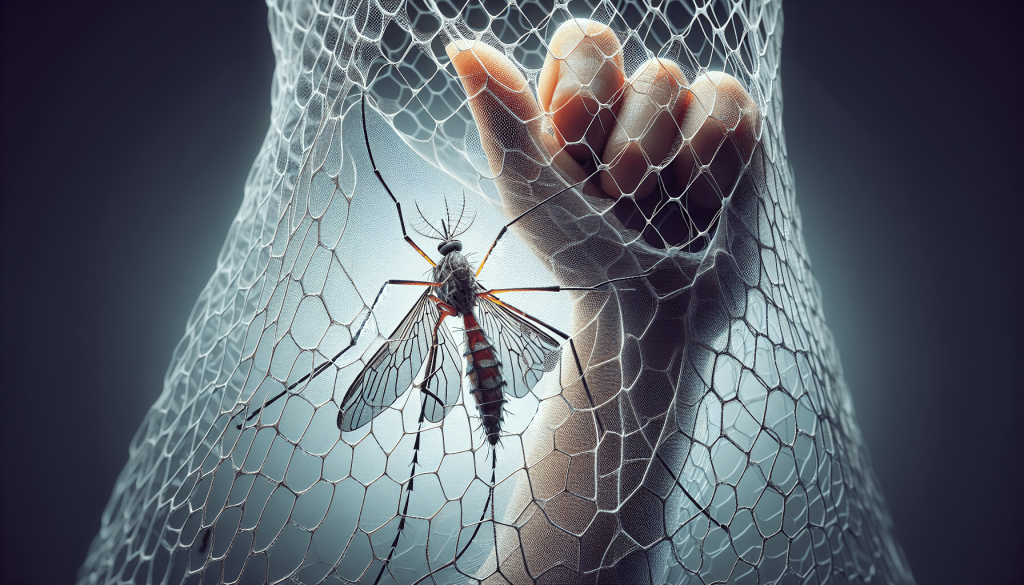I’ve always considered myself somewhat of a mosquito magnet. No matter where I go, those pesky bloodsuckers seem to find me. So you can imagine my frustration when I stumbled upon an article titled “Innovative Pest Control Technologies for Eliminating Mosquitoes.” Finally, I thought, a potential solution to my eternal battle against these tiny tormentors. The article highlighted three promising pest control technologies that boast the ability to rid your surroundings of mosquitoes. Intrigued, I ventured further into the realm of innovative mosquito elimination methods, hoping for a ray of hope in my own personal mosquito battle.
1. Biological Control Methods
1.1 Introduction to biological control methods
Biological control methods offer an eco-friendly approach to managing mosquito populations. These methods involve the use of natural enemies or biological agents to control mosquitoes. By harnessing the power of nature, we can effectively reduce mosquito populations without harming the environment or human health.
1.2 Integrated pest management (IPM) approach
Integrated Pest Management (IPM) is a comprehensive approach that combines multiple pest control strategies to manage mosquito populations effectively. IPM involves regular monitoring, identification of specific mosquito species, and the implementation of appropriate control measures. By employing a combination of biological, physical, chemical, and genetic control methods, IPM ensures a sustainable and long-term solution to mosquito control.
1.3 Use of Bacillus thuringiensis israelensis (Bti)
Bacillus thuringiensis israelensis (Bti) is a strain of bacterium that is widely used as a biological control agent against mosquitoes. Bti produces a toxin that specifically targets mosquito larvae, causing their death. This natural and effective approach minimizes the environmental impact and prevents the development of resistance in mosquito populations.
1.4 Introduction of predator fish
Predator fish, such as Gambusia affinis (mosquitofish) and certain species of guppy, can be introduced into bodies of water to control mosquito larvae populations. These fish feed on mosquito larvae, preventing their development into adult mosquitoes. By establishing a balanced ecosystem, predator fish can provide long-term control of mosquito populations without the use of chemicals.
1.5 Utilization of mosquito-specific bacteria (Wolbachia)
Wolbachia is a type of bacteria that naturally infects insects, including mosquitoes. It has been found that certain strains of Wolbachia can interfere with the reproduction and survival of mosquitoes. By releasing mosquitoes infected with Wolbachia into the wild, it is possible to reduce the overall mosquito population. This innovative approach shows promise in controlling mosquito-borne diseases like dengue, Zika, and malaria.
2. Physical Control Measures
2.1 Introduction to physical control measures
Physical control measures focus on preventing mosquitoes from accessing humans and breeding in their surroundings. These measures range from the use of physical barriers to the modification of the environment to make it less favorable for mosquito breeding.
2.2 Installing mosquito nets and screens
Mosquito nets and screens provide a physical barrier that prevents mosquitoes from entering living spaces. By properly installing these barriers on windows, doors, and outdoor areas, individuals can protect themselves from mosquito bites and reduce the risk of mosquito-borne diseases. Additionally, mosquito nets can be used over beds and cribs to create a safe sleeping environment.
2.3 Using electric mosquito traps
Electric mosquito traps work by attracting mosquitoes with light or carbon dioxide and then trapping them using a fan or adhesive surface. These traps are effective in capturing adult mosquitoes and reducing their population in a specific area. Electric mosquito traps are particularly useful in outdoor settings, such as gardens, patios, and camping sites.
2.4 Employment of mosquito larvicidal oil
Mosquito larvicidal oil is an eco-friendly solution that can be applied to standing water sources where mosquitoes breed. The oil forms a thin film on the water surface, suffocating mosquito larvae and preventing them from developing into adults. This approach is particularly effective in controlling mosquito populations in stagnant water bodies like ponds, pools, and rain barrels.
2.5 Utilization of mosquito repellent clothing
Mosquito repellent clothing is an innovative solution that incorporates insecticide-treated fabrics. These clothing items provide an additional layer of protection by repelling mosquitoes and reducing the risk of bites. The insecticide treatment is long-lasting and does not harm the wearer. Mosquito repellent clothing is ideal for individuals engaging in outdoor activities or residing in mosquito-prone areas.
3. Chemical Control Methods
3.1 Introduction to chemical control methods
Chemical control methods involve the use of insecticides and repellents to kill or repel mosquitoes. While these methods can be highly effective in reducing mosquito populations and preventing bites, careful consideration must be given to their potential impact on human health and the environment.
3.2 Using mosquito repellents
Mosquito repellents are chemical substances applied to the skin or clothing that deter mosquitoes from biting. They work by masking the body’s natural attractants or by creating an unpleasant scent for mosquitoes. Repellents containing DEET, picaridin, or oil of lemon eucalyptus are commonly used and have been proven to effectively repel mosquitoes for a certain duration.
3.3 Applying insecticides to breeding sites
Insecticides can be applied directly to mosquito breeding sites, such as stagnant water sources or vegetation, to target and kill mosquito larvae. These treatments are typically selective for mosquitoes and do not harm other organisms present in the environment. The use of larvicides, such as growth regulators or biological oils, can effectively disrupt mosquito breeding cycles and prevent the emergence of adult mosquitoes.
3.4 Utilization of fogging and misting techniques
Fogging and misting techniques involve the application of insecticides in the form of fine droplets, creating a cloud of insecticide particles. This method is commonly used for outdoor mosquito control in large areas, such as parks or neighborhoods. Fogging and misting are particularly effective in reducing adult mosquito populations and providing immediate relief from mosquito nuisance.
3.5 Employment of insect growth regulators
Insect growth regulators (IGRs) are chemicals that disrupt the development and reproduction of mosquitoes. They target specific stages of the mosquito life cycle, inhibiting the growth of larvae or preventing the emergence of adult mosquitoes. IGRs are considered relatively safe for humans and the environment, making them a valuable tool in integrated mosquito control programs.
4. Genetic Control Strategies
4.1 Introduction to genetic control strategies
Genetic control strategies involve the manipulation of mosquito genes to achieve population control or to introduce characteristics that make mosquitoes less harmful to humans. These innovative approaches show great potential in reducing mosquito-borne diseases and the reliance on traditional control methods.
4.2 Implementation of sterile insect technique (SIT)
The sterile insect technique (SIT) involves the mass rearing and release of sterilized male mosquitoes into the wild. These sterile males compete with wild males for mating opportunities, reducing the overall reproductive success of the mosquito population. Over time, this technique can lead to a significant reduction in mosquito populations and the transmission of diseases.
4.3 Utilization of genetically modified mosquitoes
Genetically modified mosquitoes are created by introducing novel genes into their genome, altering their traits or susceptibility to diseases. One example is the creation of male mosquitoes carrying a self-limiting gene that causes the death of their offspring. By releasing these genetically modified mosquitoes, it is possible to reduce mosquito populations without relying on chemical control methods.
4.4 Application of RNA interference (RNAi)
RNA interference (RNAi) is a biological process that regulates gene expression in mosquitoes. By introducing specific small RNA molecules into mosquitoes, the expression of genes crucial for their survival can be effectively suppressed. This approach targets essential mosquito genes, impairing their development or preventing the transmission of diseases such as dengue or Zika.
4.5 Field trials and challenges
The implementation of genetic control strategies requires rigorous field trials to evaluate their effectiveness, ecological impact, and acceptance by the public. Challenges such as regulatory approvals, public perception, and the potential development of resistance must be addressed to ensure the successful integration of genetic control strategies into mosquito control programs.
5. Repellent and Attractant Technologies
5.1 Introduction to repellent and attractant technologies
Repellent and attractant technologies focus on manipulating mosquito behavior by either repelling them or attracting them to specific devices or areas. These technologies provide innovative ways to control mosquito populations while reducing the reliance on traditional chemical or physical control methods.
5.2 Development of new mosquito repellents
Continued research and innovation have led to the development of new mosquito repellents that are more effective and longer-lasting than traditional options. These repellents may utilize novel ingredients, such as plant extracts or synthetic compounds, to provide enhanced protection against mosquito bites. Additionally, advancements in formulation and delivery systems have led to more convenient and user-friendly repellent products.
5.3 Utilization of carbon dioxide (CO2) traps
Carbon dioxide (CO2) traps mimic the human breath, attracting mosquitoes towards a trap where they can be captured or killed. These traps emit controlled amounts of CO2 along with other mosquito attractants, such as heat or scent cues, to lure mosquitoes away from human inhabitants. Carbon dioxide traps are particularly effective in outdoor settings, where they can help reduce mosquito populations and prevent bites.
5.4 Implementation of visual attractants
Visual attractants exploit the visual preferences of mosquitoes to attract and trap them. These attractants often utilize specific colors, patterns, or movements that mosquitoes find appealing. By strategically placing visually attractive traps or devices, it is possible to divert mosquitoes away from humans and reduce their population in a targeted manner.
5.5 Challenges and future prospects
The development of repellent and attractant technologies faces challenges such as creating long-lasting formulations, overcoming variability in mosquito behavior, and ensuring the safety and acceptability of these products. Continued research and innovation in this field hold great promise for enhancing mosquito control efforts and reducing the burden of mosquito-borne diseases.
6. Electronic Pest Control Devices
6.1 Introduction to electronic pest control devices
Electronic pest control devices are innovative technologies that utilize electronic signals or devices to repel or eliminate mosquitoes. These devices provide a convenient and chemical-free approach to mosquito control, making them popular among individuals seeking alternative solutions.
6.2 Utilization of ultrasonic mosquito repellers
Ultrasonic mosquito repellers emit high-frequency sound waves that are inaudible to humans but repel mosquitoes. These portable and battery-operated devices create a mosquito-free zone around the user, making them ideal for outdoor activities or when traveling. Ultrasonic repellers are non-toxic, environmentally friendly, and pose no health risks.
6.3 Implementation of mosquito-repelling apps
Mosquito-repelling apps are smartphone applications that emit sound frequencies known to repel mosquitoes. These apps utilize the built-in speakers of smartphones to create a sonic barrier that keeps mosquitoes at bay. With the widespread use of smartphones, these apps provide a convenient and accessible way to repel mosquitoes on the go.
6.4 Employment of mosquito-repelling lights
Mosquito-repelling lights are designed to emit specific wavelengths of light that deter mosquitoes. These lights can be used both indoors and outdoors to create a mosquito-free environment. They are typically energy-efficient and can be used as a supplement to traditional lighting fixtures.
6.5 Effectiveness and limitations
Electronic pest control devices offer a non-toxic and convenient option for mosquito control. However, their effectiveness may vary depending on factors such as the mosquito species, environmental conditions, and user compliance. Additionally, these devices should be used in conjunction with other control measures to ensure comprehensive mosquito control.
7. Innovative Trap Designs
7.1 Introduction to innovative trap designs
Innovative trap designs aim to enhance the effectiveness of mosquito trapping and eliminate mosquito populations in a targeted manner. These traps utilize various attractants and capture mechanisms to attract and trap mosquitoes, reducing their numbers and the risk of disease transmission.
7.2 Use of gravid mosquito traps
Gravid mosquito traps target female mosquitoes seeking a suitable place to lay their eggs. These traps mimic ideal oviposition sites, attracting pregnant females to lay their eggs inside the trap. Once inside, the mosquitoes are captured or killed, preventing the development of future generations and reducing mosquito populations over time.
7.3 Implementation of solar-powered traps
Solar-powered traps utilize sunlight to power the trap’s mechanisms, eliminating the need for electricity or batteries. These traps are designed to attract mosquitoes using a combination of attractants, such as heat, light, and attractant lures. Solar-powered traps are particularly useful in outdoor environments where access to electricity is limited.
7.4 Utilization of odor-baited traps
Odor-baited traps work by releasing specific scents or odors that mimic human or animal hosts, attracting mosquitoes to the trap. These traps often incorporate a combination of attractants, including carbon dioxide, lactic acid, or human sweat compounds. Once attracted to the trap, mosquitoes are captured or killed, reducing the mosquito population in the surrounding area.
7.5 Future advancements and adoption challenges
Innovative trap designs hold great promise for mosquito control, but their widespread adoption may face challenges related to cost, maintenance, and user acceptability. Continued research and development efforts are needed to improve the efficiency, affordability, and user-friendliness of these traps, ultimately making them accessible tools in mosquito control programs.
8. Smart Mosquito Control Systems
8.1 Introduction to smart mosquito control systems
Smart mosquito control systems leverage advanced technologies to monitor and manage mosquito populations more efficiently. These systems utilize data-driven approaches, connectivity, and automation to optimize mosquito control efforts and minimize human intervention.
8.2 Adoption of Internet of Things (IoT) technology
Internet of Things (IoT) technology enables the real-time monitoring and control of mosquito populations. IoT devices, such as sensors and cameras, collect data on mosquito activity, environmental conditions, and control measures. This data is then processed, allowing for informed decision-making and the timely implementation of appropriate control strategies.
8.3 Automated mosquito monitoring and control
Smart mosquito control systems incorporate automated monitoring and control mechanisms to detect and respond to changes in mosquito populations. Automated traps, sensors, and weather stations continuously gather data, triggering targeted control measures when necessary. By automating these processes, smart control systems can minimize the reliance on manual interventions and improve efficiency.
8.4 Utilization of weather-based prediction models
Weather-based prediction models use meteorological data to forecast mosquito activity and abundance. By analyzing factors such as temperature, humidity, and rainfall, predictive models can estimate the risk of mosquito-borne diseases and guide control efforts. Weather-based prediction models enable proactive mosquito control measures and improve the targeting of limited resources.
8.5 Benefits and potential limitations
Smart mosquito control systems offer numerous benefits, including improved efficiency, cost-effectiveness, and the ability to adapt to dynamic mosquito populations. These systems can enhance public health outcomes by providing timely and targeted interventions. However, challenges related to data security, infrastructure, and initial implementation costs need to be addressed to facilitate the widespread adoption of smart control systems.
9. Photonic Technologies
9.1 Introduction to photonic technologies
Photonic technologies leverage the properties of light to control and eliminate mosquitoes. These technologies harness the power of lasers, LED lights, and other light-based systems to manipulate mosquito behavior, trap or kill them, and create protective barriers.
9.2 Utilization of laser-based mosquito control
Laser-based mosquito control systems use lasers to target and kill mosquitoes in flight. The intense light beam emitted by the laser can selectively identify and eradicate mosquitoes without harming beneficial insects or other organisms. Laser systems can be deployed in specific areas, such as airports, stadiums, or outdoor venues, to provide effective and immediate mosquito control.
9.3 Implementation of LED light traps
LED light traps attract mosquitoes by emitting specific wavelengths of light that are highly attractive to them. These traps incorporate LED lights that are energy-efficient and have customizable spectra to optimize mosquito attraction. Once mosquitoes are lured in, they are either captured or killed, preventing their reproduction and reducing mosquito populations.
9.4 Application of photonic fences
Photonic fences use infrared sensors and lasers to create virtual barriers that detect and eliminate mosquitoes upon contact. When a mosquito crosses the fence, the sensors trigger a laser beam that kills or disables the mosquito. Photonic fences offer a precise and targeted method of mosquito control, eliminating the need for broad-spectrum insecticides.
9.5 Considerations and future prospects
Photonic technologies show great promise in mosquito control due to their precision, low environmental impact, and potential for automation. However, challenges related to cost, scalability, and integration with existing control strategies need to be addressed for widespread adoption. Continued advancements in photonic technologies hold the potential for transformative mosquito control measures in the future.
10. Biopesticides and Plant-Based Solutions
10.1 Introduction to biopesticides and plant-based solutions
Biopesticides and plant-based solutions offer a sustainable and environmentally friendly alternative to chemical insecticides. These solutions utilize natural ingredients derived from plants to repel, control, or kill mosquitoes, reducing reliance on synthetic chemicals.
10.2 Utilization of neem oil as a natural pesticide
Neem oil, derived from the neem tree, contains compounds that have insecticidal properties. Neem oil acts as a repellent, disrupts mosquito feeding and breeding, and can cause mortality in mosquitoes. This natural pesticide is considered safe for humans, animals, and beneficial insects, making it an ideal choice for eco-friendly mosquito control.
10.3 Implementation of garlic-based mosquito repellents
Garlic-based mosquito repellents utilize the strong odor and volatile oils present in garlic to repel mosquitoes. These repellents can be applied topically to the skin or used in outdoor sprays to create a protective barrier against mosquito bites. Garlic-based repellents are non-toxic, biodegradable, and an attractive option for individuals looking for natural alternatives.
10.4 Use of botanical extracts in mosquito control
Botanical extracts, derived from plants such as citronella, lemongrass, and eucalyptus, have been used for centuries as mosquito repellents. These extracts contain natural compounds that can repel mosquitoes through their scent or by disrupting their sensory systems. Botanical-based mosquito control products offer a renewable and sustainable approach to managing mosquito populations.
10.5 Sustainability and challenges of plant-based solutions
Plant-based solutions for mosquito control provide a sustainable and renewable alternative to conventional chemical control methods. However, the efficacy of these solutions can vary depending on factors such as species-specific mosquito preferences and environmental conditions. Further research and optimization of formulations are needed to enhance the effectiveness and longevity of plant-based solutions.
In conclusion, innovative pest control technologies offer a vast array of options for eliminating mosquitoes and reducing the risks associated with mosquito-borne diseases. Whether through biological, physical, chemical, genetic, repellent and attractant technologies, electronic pest control devices, trap designs, smart control systems, photonic technologies, or plant-based solutions, there are numerous effective and sustainable approaches to managing mosquito populations. By adopting a comprehensive and integrated approach to mosquito control, we can create safer and healthier environments for ourselves and future generations.





